Of the almost 50m boxes of banana Fyffes sold in 2016, 10% is made up of organic bananas sourced from 1,174 farms. They’re based in Colombia, Dominican Republic, Ecuador, Mexico and Peru and vary from 1ha to 600ha in size.
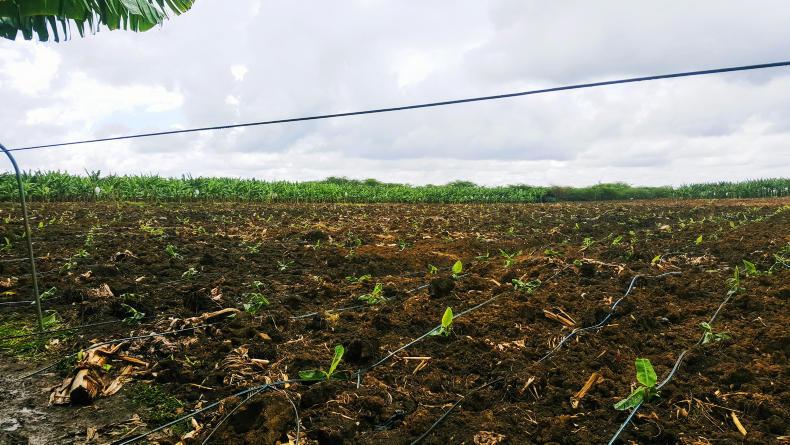
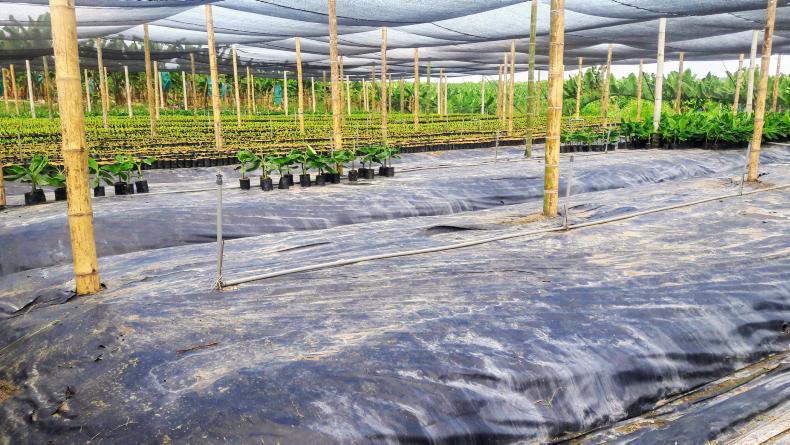
A combination of desert-like heat and low rainfalls is best for growing organic bananas in comparison to conventional bananas. The average temperature range is 25°C to 30°C. Too much rain will only help the development of Sigatoka (a fungal leaf-spot disease). This disease reduces the fruit yield by 50% and also causes premature ripening.
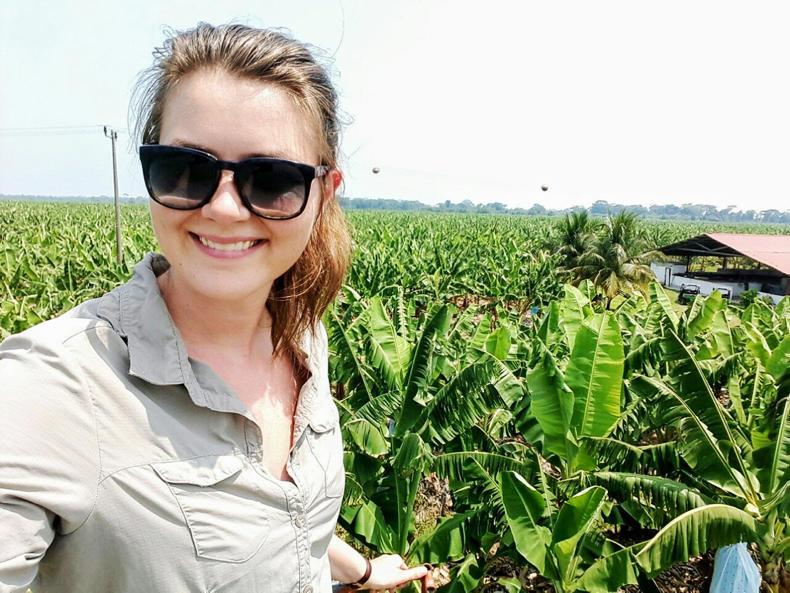
Organic fungicides and manual pruning of the leaves with machetes are the only permissible controls of the disease.
The banana plant is a perennial herb and the most common variety is the Cavendish. The fruit is harvested green throughout the year. It takes nine months from the planting of a banana bulb to the harvesting of the first bunch.
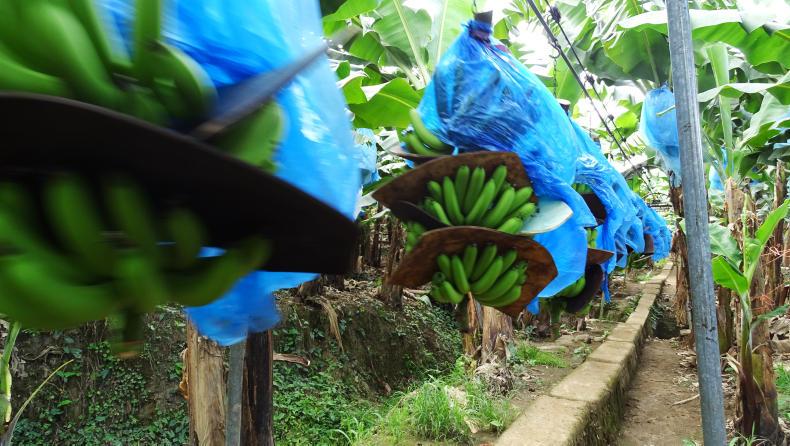
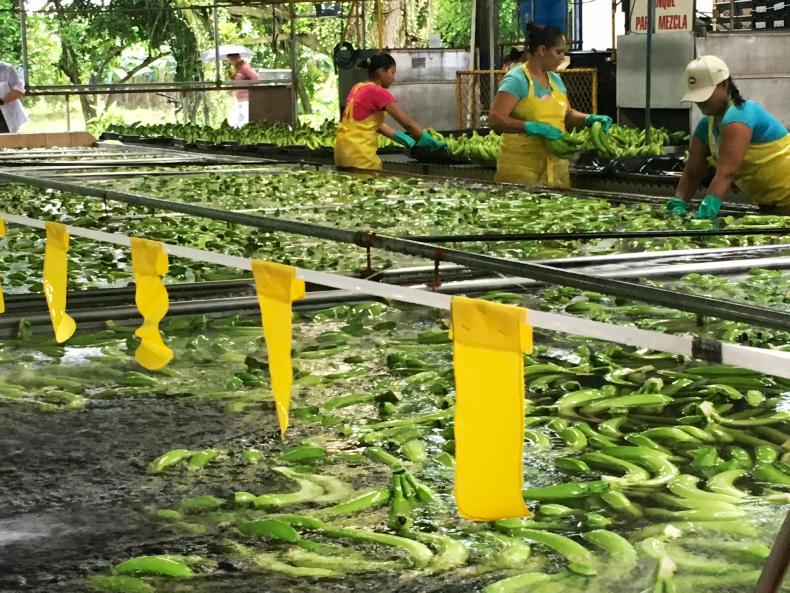
Seven months into the growth cycle the plant begins to flower; this contains protective leaves and the fruit. A bag is placed over the bunch to protect it from insects, birds, wind and to create a microclimate. It’s tied to the fruit stem with a colour-coded ribbon that denotes the expected date of harvest.
As the fruit stem matures and grows larger, the protective leaves are removed and the exposed fruit grows towards the sun resulting in their unique shape.
The plant requires 7mm of water a day, so an effective irrigation system is necessary. Micro or drip irrigation are the most popular.
Once harvested, fruit is packed depending on supermarkets’ specifications. These include the number of fingers per cluster, the length, etc.
Shipping to Europe takes two to four weeks and the fruit is transported in atmosphere-controlled containers at 14°C. This controlled atmosphere puts the fruit into a vegetative state, to prevent it from ripening any further. Once the fruit arrives at ripening centres, the ripening process begins.
In the past five weeks, I’ve travelled and visited organic supplier farms in four countries, taking 16 flights and flying 18,904 miles.
One visit was to the Dominican Republic with representatives from a major UK supermarket who wanted to see the origin of the organic fairtrade bananas they purchase. This trip allowed a co-operative of 300 small farmers with an average farm size of 3.5ha, to showcase their certified farms.
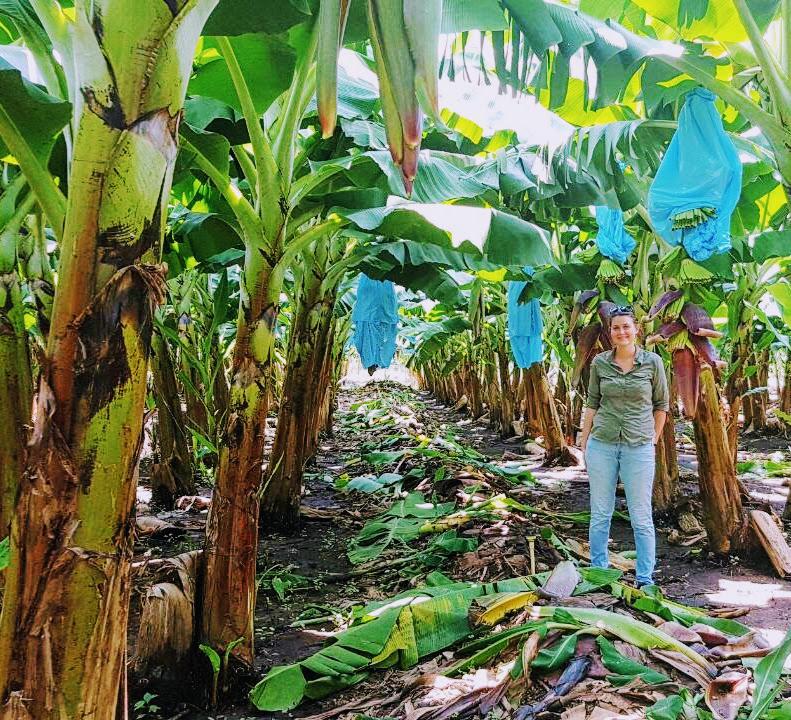
Stable prices
Fairtrade is very important for banana farmers and workers because it offers more stable prices and better working conditions. The farmer associations receive guaranteed prices and they also avail of the fairtrade premium which is invested in education, housing, health and many other social initiatives in the community.
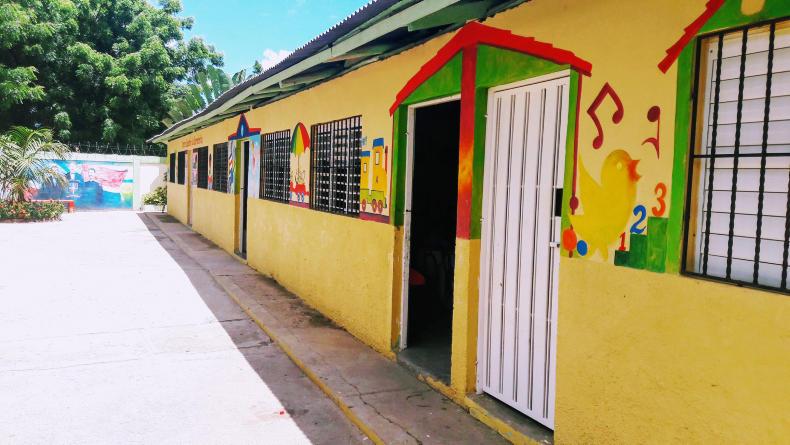
Read more
Farmer writes: Farming is not all about producing food
In pictures: Milking 65 cows with robots in Iceland
Of the almost 50m boxes of banana Fyffes sold in 2016, 10% is made up of organic bananas sourced from 1,174 farms. They’re based in Colombia, Dominican Republic, Ecuador, Mexico and Peru and vary from 1ha to 600ha in size.


A combination of desert-like heat and low rainfalls is best for growing organic bananas in comparison to conventional bananas. The average temperature range is 25°C to 30°C. Too much rain will only help the development of Sigatoka (a fungal leaf-spot disease). This disease reduces the fruit yield by 50% and also causes premature ripening.

Organic fungicides and manual pruning of the leaves with machetes are the only permissible controls of the disease.
The banana plant is a perennial herb and the most common variety is the Cavendish. The fruit is harvested green throughout the year. It takes nine months from the planting of a banana bulb to the harvesting of the first bunch.


Seven months into the growth cycle the plant begins to flower; this contains protective leaves and the fruit. A bag is placed over the bunch to protect it from insects, birds, wind and to create a microclimate. It’s tied to the fruit stem with a colour-coded ribbon that denotes the expected date of harvest.
As the fruit stem matures and grows larger, the protective leaves are removed and the exposed fruit grows towards the sun resulting in their unique shape.
The plant requires 7mm of water a day, so an effective irrigation system is necessary. Micro or drip irrigation are the most popular.
Once harvested, fruit is packed depending on supermarkets’ specifications. These include the number of fingers per cluster, the length, etc.
Shipping to Europe takes two to four weeks and the fruit is transported in atmosphere-controlled containers at 14°C. This controlled atmosphere puts the fruit into a vegetative state, to prevent it from ripening any further. Once the fruit arrives at ripening centres, the ripening process begins.
In the past five weeks, I’ve travelled and visited organic supplier farms in four countries, taking 16 flights and flying 18,904 miles.
One visit was to the Dominican Republic with representatives from a major UK supermarket who wanted to see the origin of the organic fairtrade bananas they purchase. This trip allowed a co-operative of 300 small farmers with an average farm size of 3.5ha, to showcase their certified farms.

Stable prices
Fairtrade is very important for banana farmers and workers because it offers more stable prices and better working conditions. The farmer associations receive guaranteed prices and they also avail of the fairtrade premium which is invested in education, housing, health and many other social initiatives in the community.

Read more
Farmer writes: Farming is not all about producing food
In pictures: Milking 65 cows with robots in Iceland





















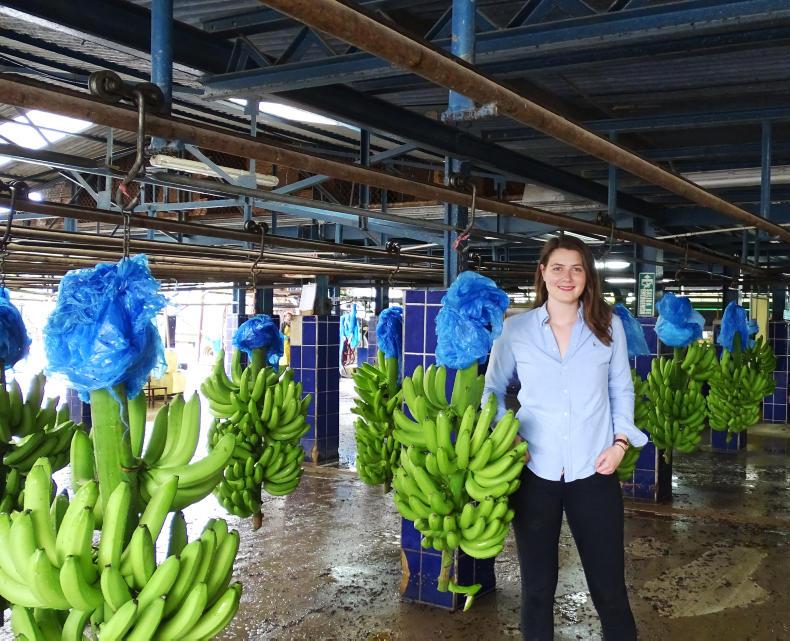
SHARING OPTIONS